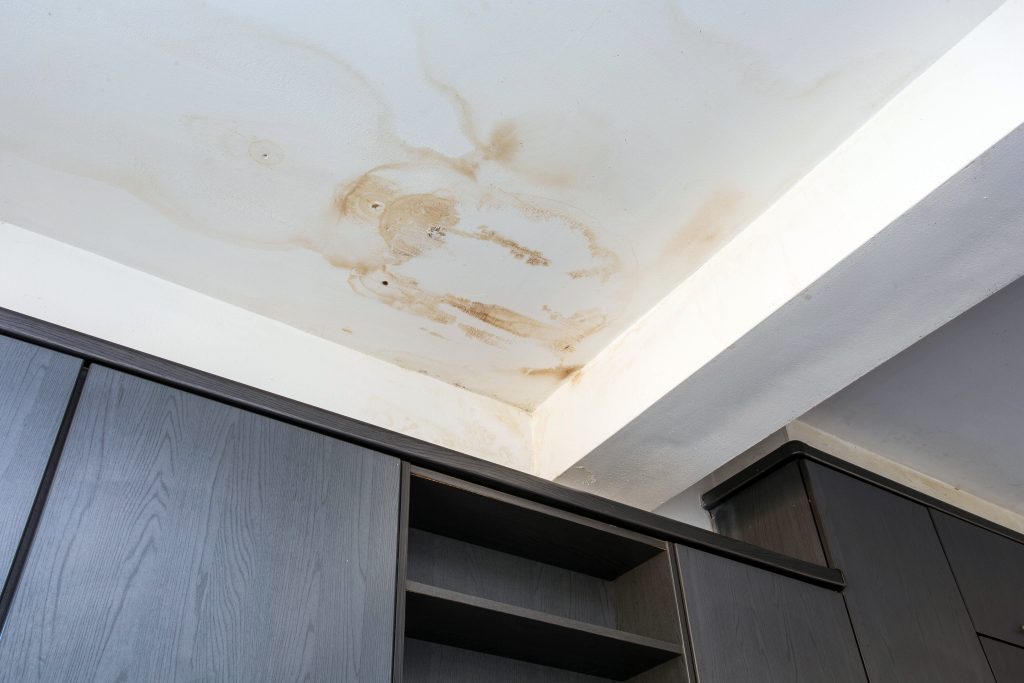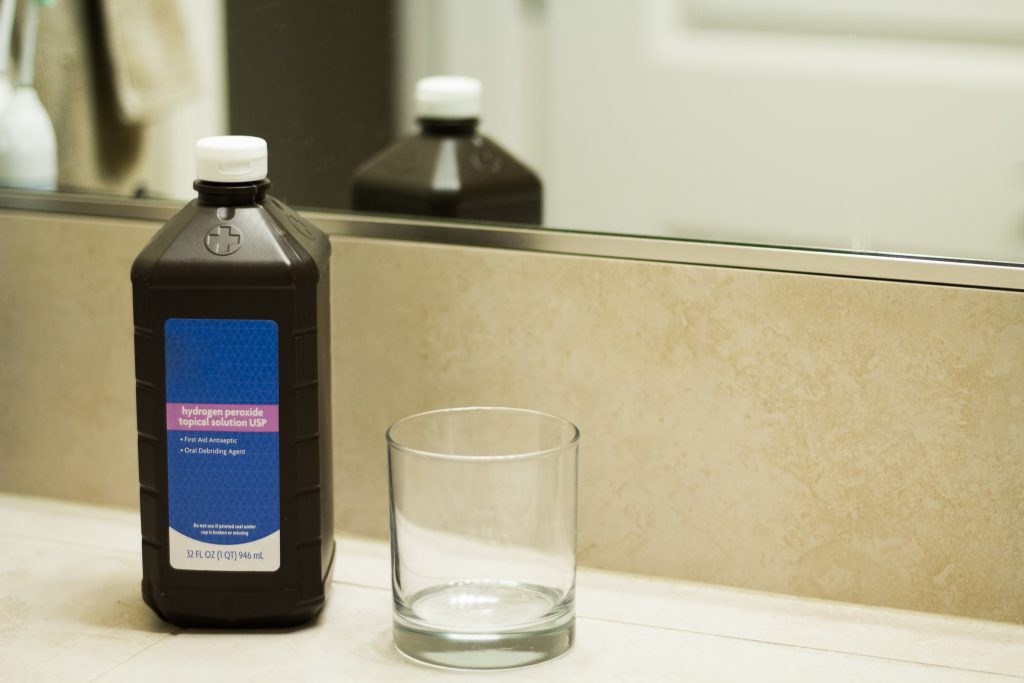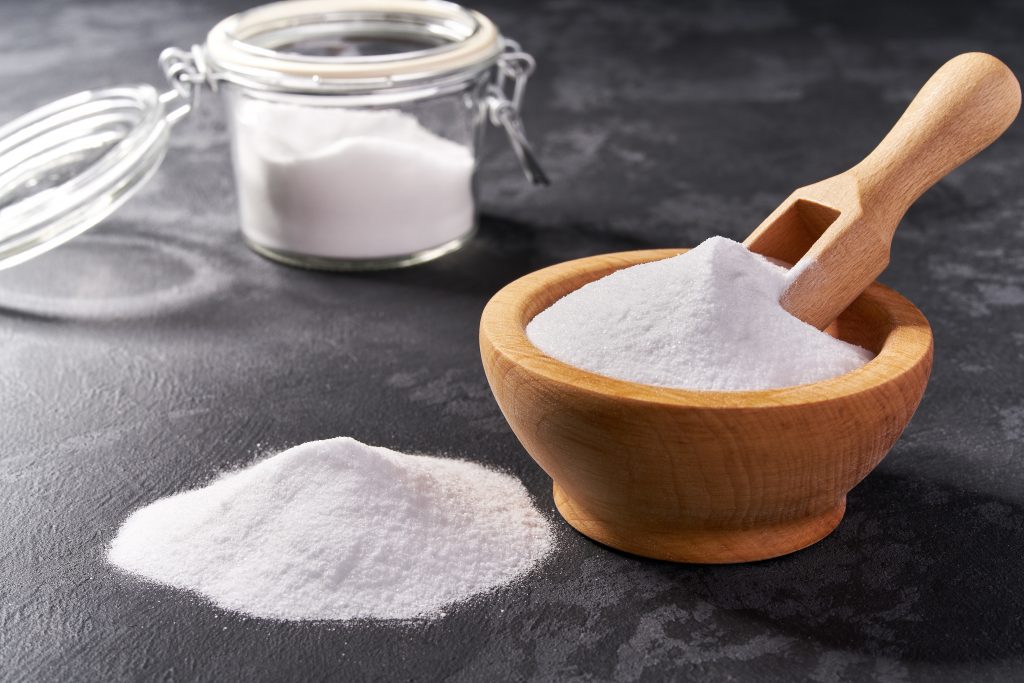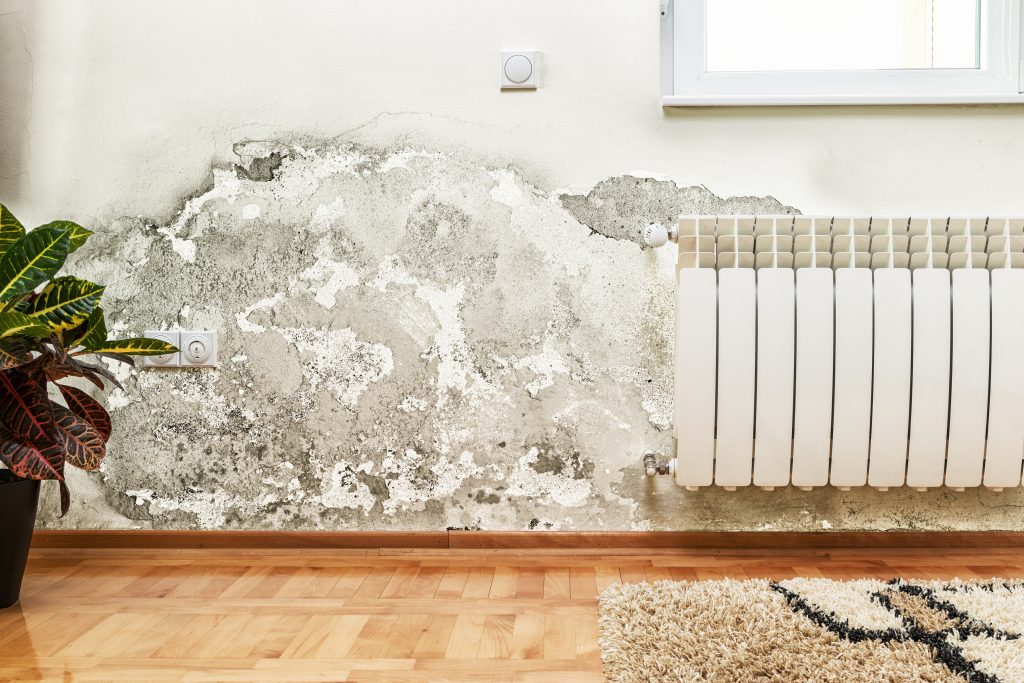Winter is slowly turning into spring, which means one thing—rain is on the way! During this time of the year, melting snow and heavy rain can cause water damage for unsuspecting homeowners. If you have found some concerning signs, and you can’t tell if those discolored marks underneath the sink are mold or just water stains, then continue reading!
In order to best prevent and treat mold or mildew, you need to know a little bit more about these fungi. This article breaks down what mold is (plus its health hazards) and how to tell the difference between mold, mildew, and water stains. In addition, we supply you with tips to prevent mold growth and how to properly treat it.
The BasicsWhat is Mold?
Mold is a type of fungus that consists of small organisms found in almost every environment on earth. Mold colors can be black, white, orange, green, or even purple. Mold plays an important role in nature decomposing dead plants and trees. They thrive on cellulose, what trees and plants are made of. For this reason, they love to grow on natural products like paper, wood, or insulation. Water is a necessary ingredient for their success. When humans are exposed to it for extended amounts of times it can cause health complications, especially for those at higher risk.
What to Know
- Mold can be a variety of colors
- Mildew & Mold live indoors/outdoors
- Both thrive in dark, moist areas
- Both reproduce via spores that travel through the air
- Mold sensitivity varies among people
Places to watchWhere do Mold & Mildew Grow
Mold is an adaptable life form, able to grow in your walls, floors, appliance, furniture or carpet. All molds need moisture, so the most likely places you will find the presence of mold is in damp places. Moisture-prone areas of your home include: bathrooms, kitchens, laundry rooms, basements, and crawl spaces (i.e. attics and in between walls). Essentially, wherever water is common in your home is an opportune place for both mildew and mold growth.
Mold vs. MildewWhat’s the Difference?
Mildew is a kind of mold, meaning they have a lot in common. They spread in similar manners, thrive in wet and dark environments, and both can cause health issues. Mildew is considered an early stage mold, making it less harmful and easier to treat than fully developed mold. Mold is more damaging to structures and can actually ruin the integrity of your home, as it eats aways and ruins wood. Mildew is typically white, gray or yellow and grows on the surface of moist, warm areas. Its texture is fluffy or powdery. Mildew tends to grow on flat surfaces. On the other hand, mold tends to be green or black, and it usually grows underneath the surface of anything that has gotten wet. Its texture can be fuzzy or slimy.
Health Complications
Mold and Mildew in very small quantities is not a health hazard to most people. People are exposed to these fungi everyday. However, some individuals. are more susceptible and at risk to mold than others. Such people are those who have allergies and asthma. Additionally, infants, children, the elderly, and those with diseases that lower immune systems (i.e. cancers, HIV, asthma) are also at risk for developing mold related health problems. Mildew is usually considered to be less impactful on your health than mold. Exposure to mold results in symptoms such as sneezing, runny nose, dry skin, and itchy eyes. If you fit into one of these categories, it’s imperative to know if mold or mildew is potentially growing inside your home and to effectively treat it.
How to tell the DifferenceMold or Water Stains?
Distinguishing between mold growth and water stains or damage can be tricky. But here are some indications to look out for. Typically, a “musty” scent or visible discoloration on ceilings, walls, or valuables are the first signs that a mold problem may exist in your home. Not all molds are Black. Different colors in combination with varying texture is a clear indicator of microbial growth.
Water Stains
Water stains are an indication of a water problem (which makes it possible for further mold growth). Unfortunately, not all water damage is easily visible. Water damage can be present within walls, underneath floors, and on ceilings. Evidence of small, on going leaks may not be visible until mold has begun growing. Still there are a few things to look out for. Irregular stains may be an indication of mold growth. Some molds stain the surface on which the mold is growing, which leaves a black or blue-black colored stain. Mold growth will cause further damage to the material it is growing on and can ruin wood integrity.

Signs of Water Damage
- Peeling or bubbling wallpaper & paints
- Curling or bubbling vinyl flooring
- Warped wooden floors
- Yellow, brown, or copper-colored stains
Signs of Mold Growth
- Soft, Slimy, or damp
- Will smear when touched
- Pungent, Rotten, ‘Musty’ Smell
- Blue, green, yellow, grey, black, and white colors
PreventionTips for Controlling Mold Growth
If you or your family have underlying health conditions that may put you more at risk for mold growth, or are just looking to prevent bacterial growth in general, following these tips listed below will reduce moisture and lower the chance for subsequent mold growth.
- icon
Utilize dehumidifiers and air conditioners in hot, humid areas to reduce air moisture
- icon
Consider adding insulation to cold surfaces, like in between walls and floors, to reduce condensation
- icon
Buy a cheap hygrometer, available at most hardware stores. Keep indoor humidity to below 60%
- icon
Use exhaust fans to move moisture outside of the home when cooking, washing dishes, and cleaning
- icon
Check for leaks around sinks, refrigerator ice makes, and other sources of water
- icon
Open a window when showering, avoid leaving damp towels
- icon
Clean up spill within 24-48 hours and make sure to check on A/C and refrigerator drip pans
Treating Mold & Mildew3 natural & safe Solutions:
Unfortunately, mold and mildew are a part of life. Take a look around your home. Inspect the attic, basement, underneath your kitchen sink, and any other areas that are dark and moisture prone. When conditions are right, mold can grow within 24-48 hours. It’s important to stop it in its tracks so you and your loved one’s are not exposed to dirty air quality. The following are three household solutions for cleaning mold. These are inexpensive, natural, pet-friendly methods to properly treat mold. The three suggestions are non-toxic alternatives to chemical based products. Sometimes, if you find a huge infestation of mold, it may be out of your control to take care of it. If you find a large quantity of mold or mildew, hire a specialist who will make your home safe.
Required Items
- Cleaning Supplies
- Hydrogen peroxide
- Scrub Brush
- Face mask
- Rubber gloves
- Vinegar
- Spray bottle
Option #1Hydrogen Peroxide
This is an antifungal, anti-viral, and antibacterial solution that kills mold and mildew effectively. Pour 3% concentration hydrogen peroxide into a spray bottle. Spray your solution onto the moldy areas. Then let the hydrogen peroxide sit for an hour. After, scrub the mold and mold stains. Finally wipe down the surface to remove residual growth.

Option #2Vinegar
Vinegar is acidic and is known to kill most types of mold. Sometimes, homeowners may combine vinegar and baking soda to treat mold. Use white distilled vinegar and pour it into a spray bottle. Spray the vinegar and let it sit on the mold for over an hour. Wipe the area with water and allow it to dry. Vinegar odor may be present for a few hours after, but it will become less smelly over time.

Option #3Baking Soda
A mild white mineral powder that is considered a very safe option to clean, especially for pets. Besides killing the mold, baking soda absorbs moisture to help keep mold away. To kill the mold add one quarter to a half of a tablespoon of baking soda into a spray bottle of water. Shake it until the baking soda has dissolved. Next spray the moldy areas, wait a few minutes, then scrub to remove all the mold. Rinse the surface with water to remove any residual mold. Lastly, spray the area again and let it dry.

Make Your Home Safer TodayCONNECTING YOU WITH LOCAL SERVICE PROFESSIONALS YOU CAN TRUST!
PoweredByPros is a leading digital home services marketplace. We match homeowners from across the nation with screened remodel and repair professionals they can trust to successfully complete any type of home improvement or renovation project. For over a decade, homeowners have trusted us with providing them professional and quality services for their property. In order for us to connect you with a painting expert in your area, our highly skilled customer service team will contact you to gather all your project information and pay special attention to your design and amenity requests. We make planning, budgeting, and hiring a local kitchen and painting contractor easy and free! Save time and money, get started today!
